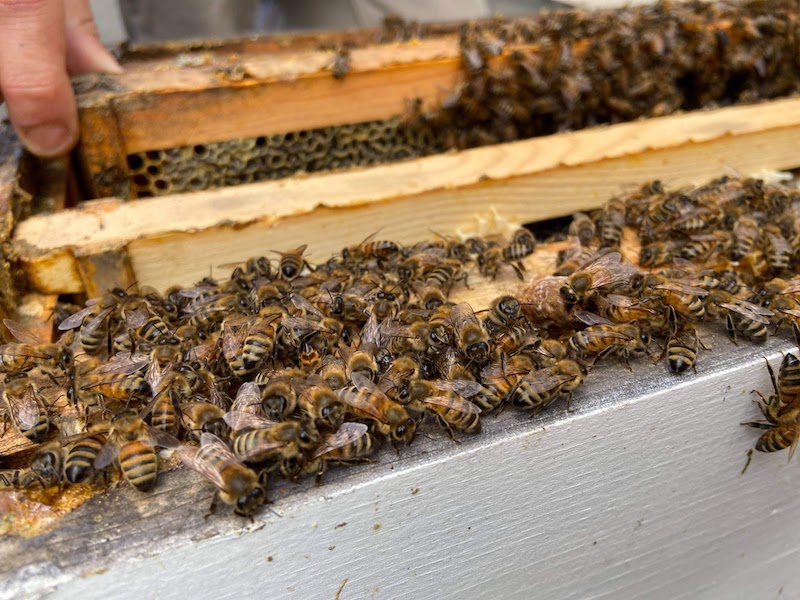Spring is a time of strong colony development. It is the time when it is necessary to develop the colonies by giving them space.
As soon as the temperature rises and the spring honey flow begins, the beekeeper’s role is to give space to the colonies to prevent swarming.
When the temperature of the night does not exceed 50°F
Space must be given because as soon as the conditions are right, the queen will lay more and more eggs. In full honey flow, the queen lays from 1700 to 2500 eggs per day.
To achieve this, we add a new frame that the bees will be able to stretch and where the queen will be able to lay. You must place this extra frame at the edge of the brood nest between the last brood frame and the first pollen frame. Only add one at a time so that you do not increase the space too quickly.
Eight days later, at the next visit, you check that the first frame has been built and laid. If this is the case, you will add a frame to be built on the other side of the brood.
When the temperature of the night exceed 50°F
Then you can insert a new frame in the middle of the brood. At this stage, it is interesting sometimes to invert two frames to bring the old blackened frames to the edge of the space where they should be.
There comes the point when the hive is complete. At this time, you will have the opportunity to remove the old frames and place frames to be built in the brood. When you remove an old frame, it is not empty. This action sometimes requires sacrificing a little brood or honey to regenerate your wax. Replacing blackened frames with new ones is essential to maintain the right level of hygiene in the colony. It also makes the bees work, which is a considerable measure to prevent swarming.
Ideally, one-third of the frames should be replaced every year. All the frames in the hive are thus renewed every three years.

